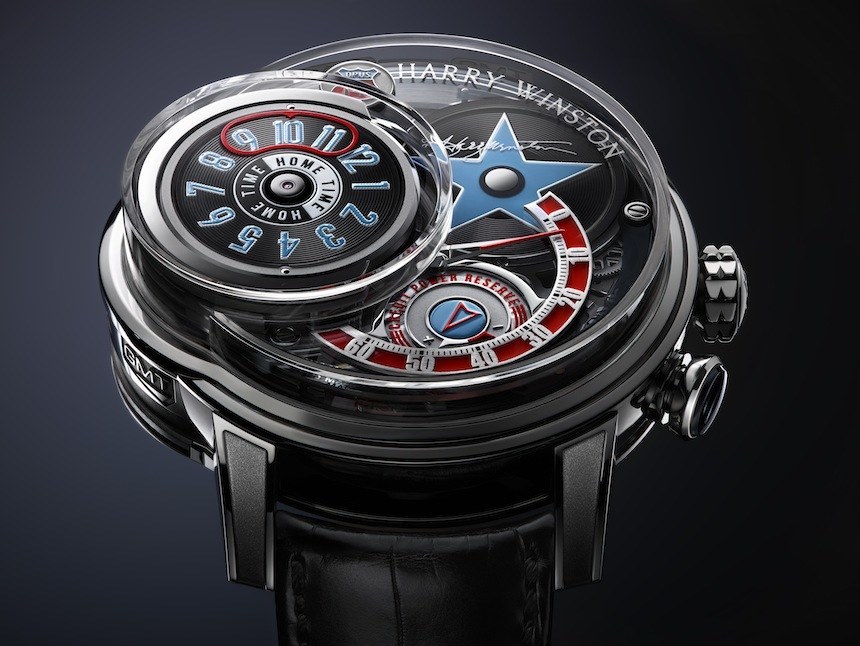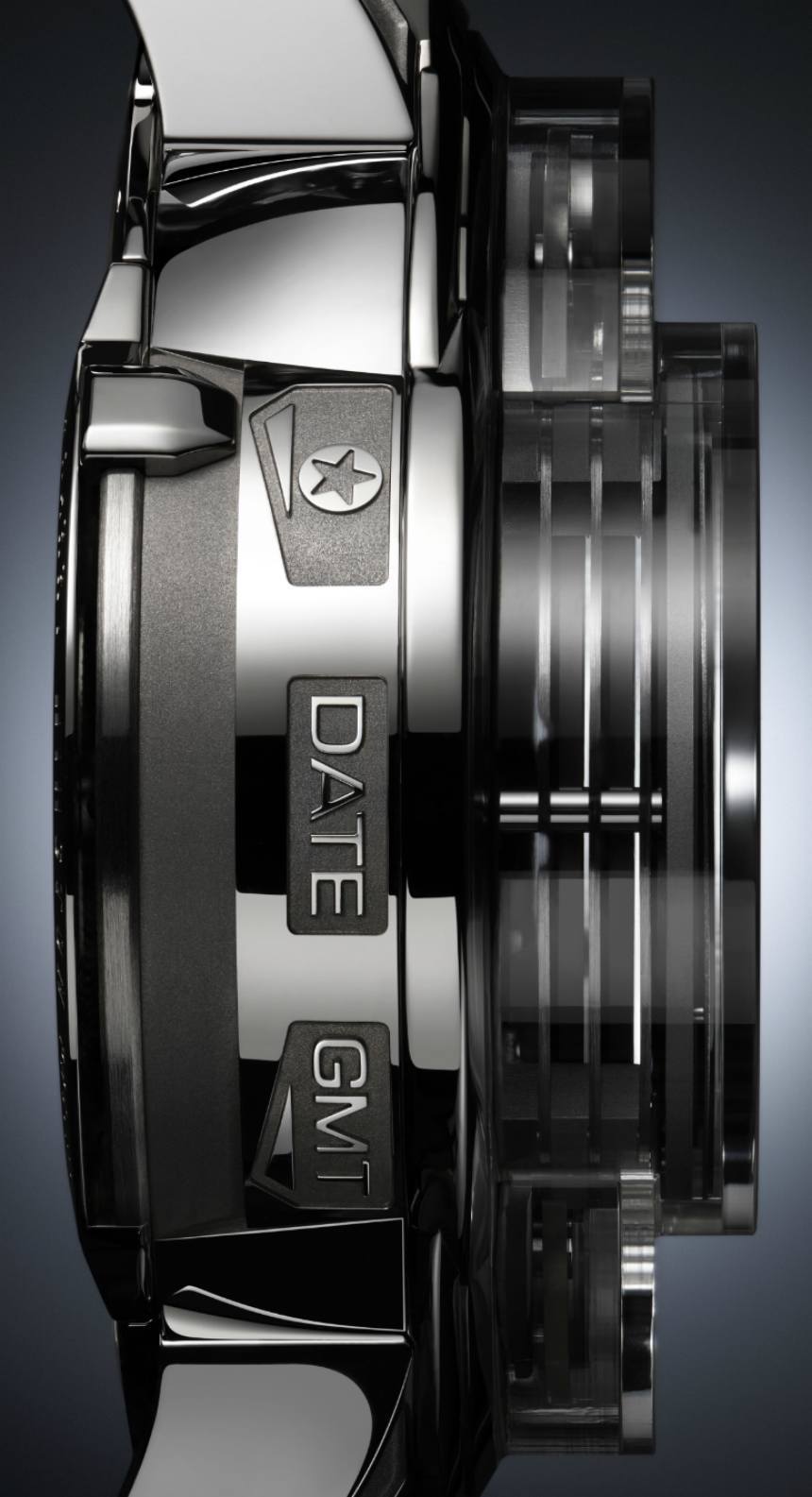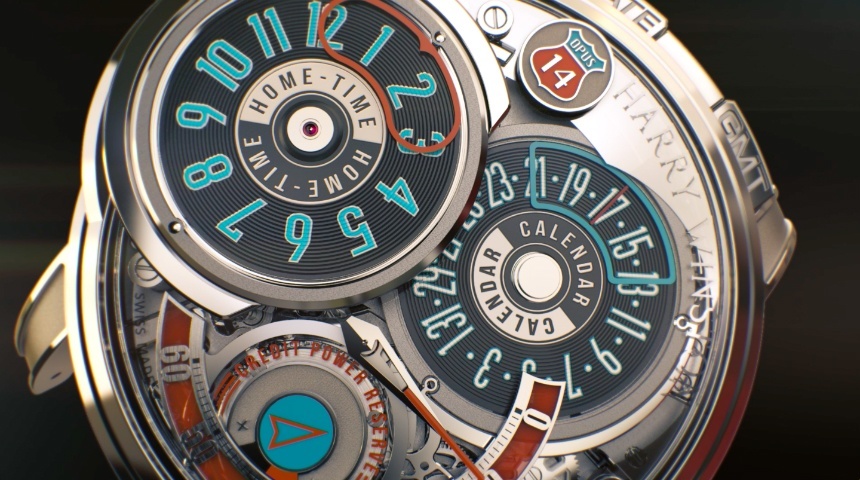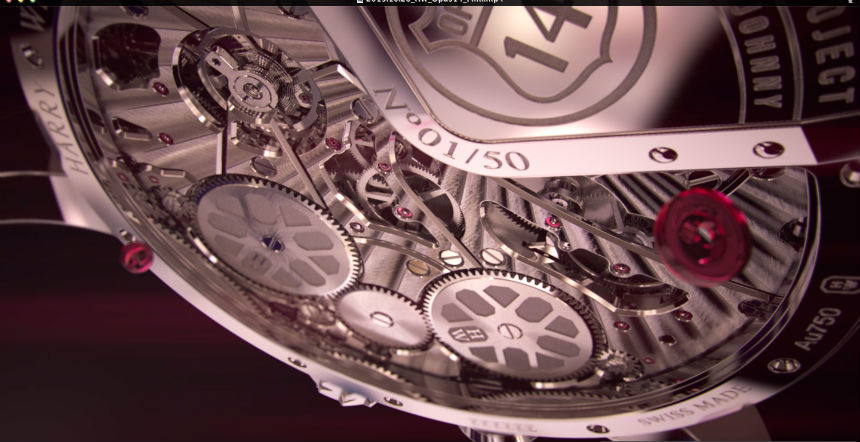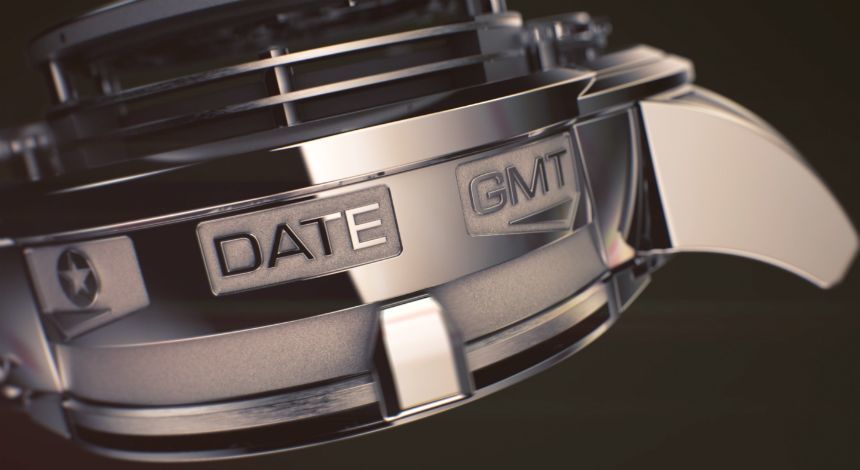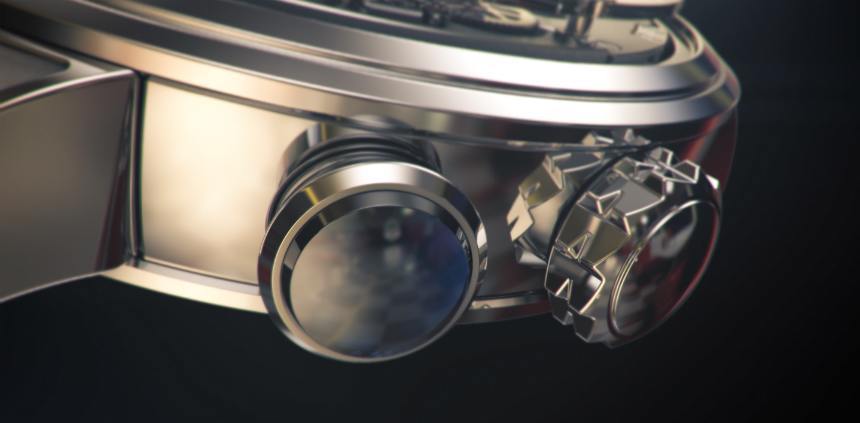
Today, as we are in Baden-Baden, Germany, with Harry Winston, we have some terrific news for the fans of independent watchmaking: the Harry Winston Opus 14 watch has, at last, been revealed. Pursuing a ’50s America vibe and featuring some automaton mechanisms inspired by the iconic record changer machines of the era, the Opus 14 appears to be more of a new beginning for the series than just another chapter.
Watch enthusiasts around the world have waited rather long for this remarkable series of highly complicated timepieces to continue, and many were worried that maybe we would never see the Opus collection expand with another new piece again – here’s why.
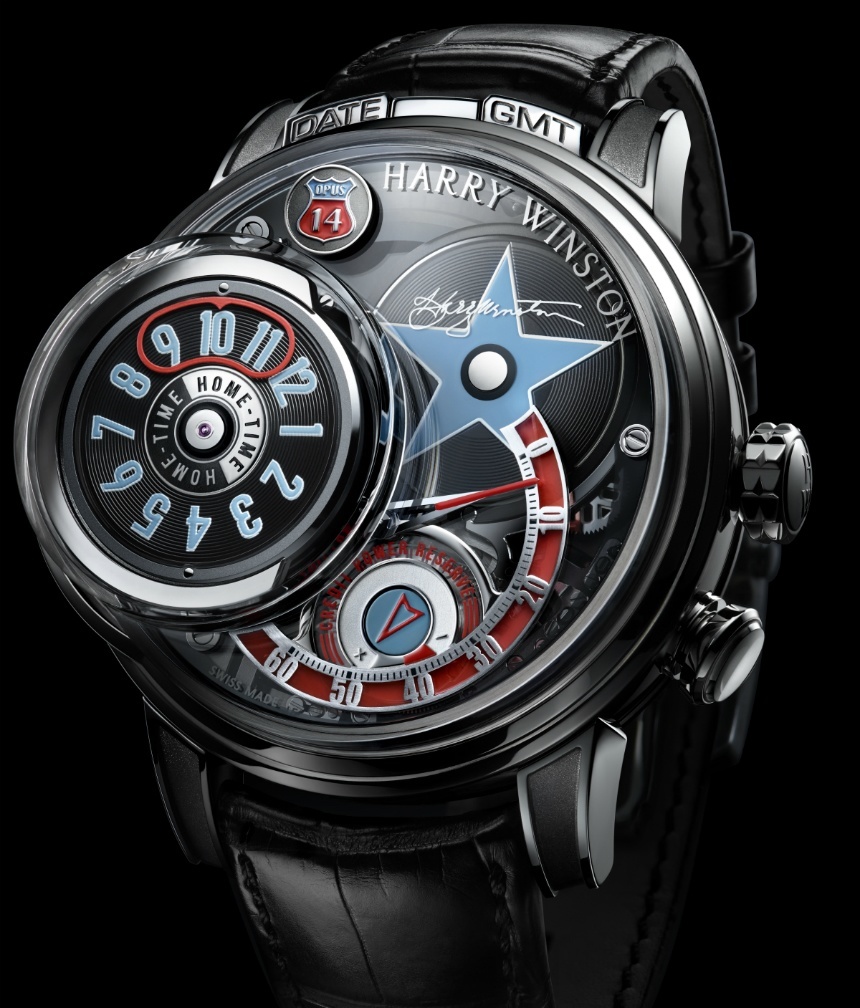
The Harry Winston Opus series dates back to 2001, when then-CEO of Harry Winston Rare Timepieces, and since, founder and CEO of MB&F Maximilian Büsser and Francois-Paul Journe created the Opus 1. With that, a wonderful venture into the very depths of the independent watchmaking universe began – and it continued in what turned into the Opus series of watches, where Harry Winston continued to work together with some of the greatest independent watchmakers of our time. Some 13 iterations later, in 2013, the project was believed by many to have come to its end when Swatch Group purchased Harry Winston.
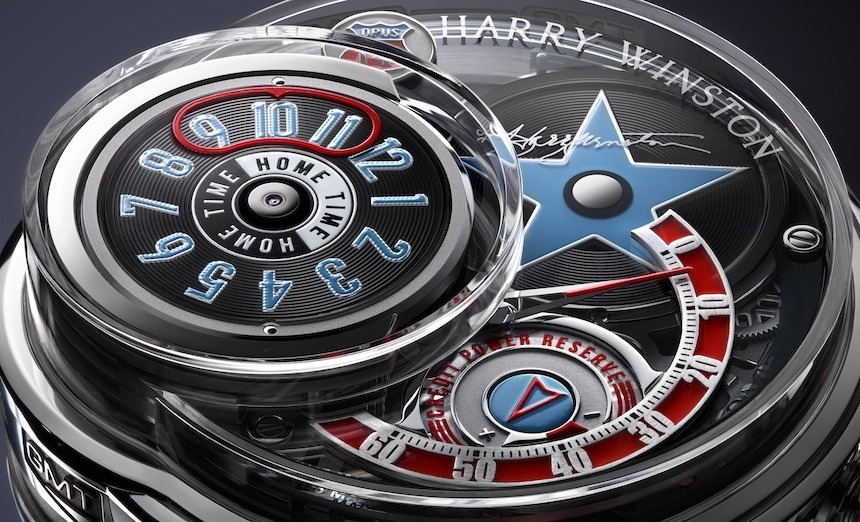
The concern of watch enthusiasts was valid in the sense that what made the Opus series so special was that it provided the opportunity to some of the genius master watchmakers of our time to create bold, new mechanical pieces that either offered a totally new way of telling time – like the Opus XIII (hands-on here) –or made for a new expression of a watchmaker’s trademark complication, like the Opus 5. Losing out on such a unique initiative would have been a real shame. Even if the utmost majority of the Opus line’s admirers could not possibly acquire a piece from the series, it allowed them to better appreciate the works of some of today’s finest watchmakers and designers – and so they were rightfully concerned about never seeing this initiative continue.
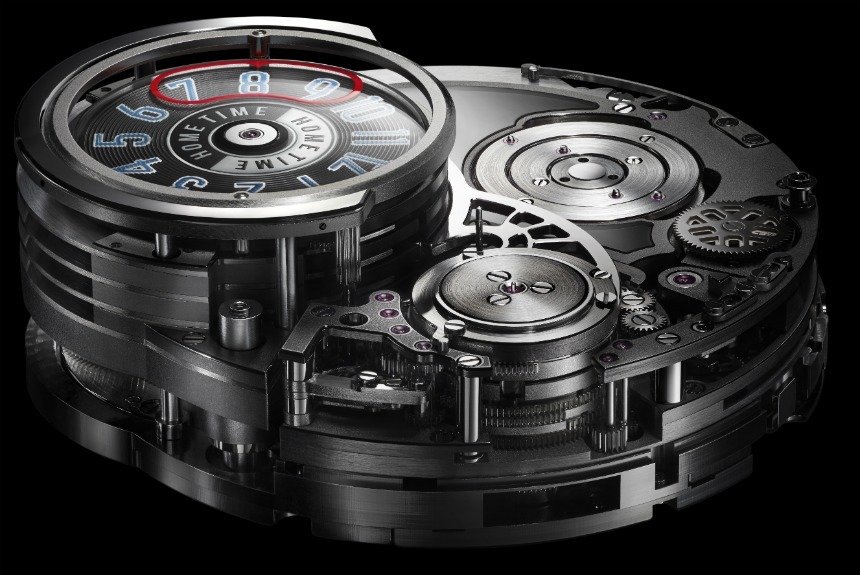
Today, however, the Harry Winston Opus 14 watch has made its debut in Baden-Baden, Germany – see Ariel’s wristshot from the event just above – and that means that the Opus name lives on. What is new, however, is that we see more of an automaton-style mechanism stealing the show as opposed to a funky, extremely complicated new way of indicating the time as, again, had been the case for the last several years.
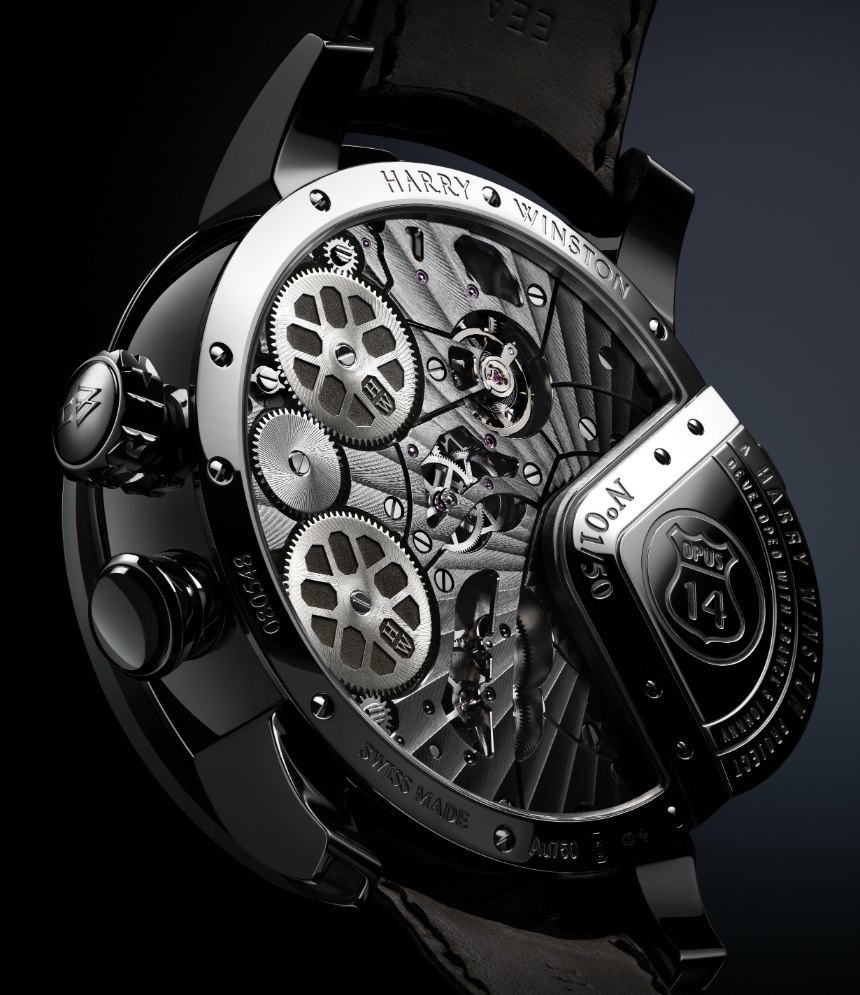
Harry Winston has worked with Franck Orny and Johnny Girardin of Télôs SA, two master watchmakers and designers who began with a clean slate when they started the design and development process of the Harry Winston Opus 14. The resulting timepiece is a more-than-bold 54.7 millimeters wide and 21.9 millimeters thick – not entirely unusual for the Opus line of super complicated watches which tend to require a lot of space to house the massive and often unusually shaped calibers.
The round, asymmetrical case, therefore, contains the HW4601 movement that comprises a whopping 1,066 individual parts and 124 jewels, offers 68 hours of power reserve for the movement, and up to 5 hours of “back and forth disk movements.”
Yes, in line with the ’50s theme, the Harry Winston Opus 14 features a classic record changer-inspired automaton complication that has three records to play, so to speak. By using the slider set into the left side of the case, one can choose between the following three disks: GMT time, the date, and a star bearing the signature of Harry Winston, a reference to the stars of the Hollywood Walk of Fame.
The way it works is that the selector on the left side has to be set into one of its three aforementioned settings, marked by GMT, Date, and a star Emblem. Then, by pressing the pusher at the 4 o’clock position of the case, a moving arm picks up the disk and sets it onto the platform that is at the 2 o’clock position on the dial. Press the pusher again, and the arm will move the disk back into the store.
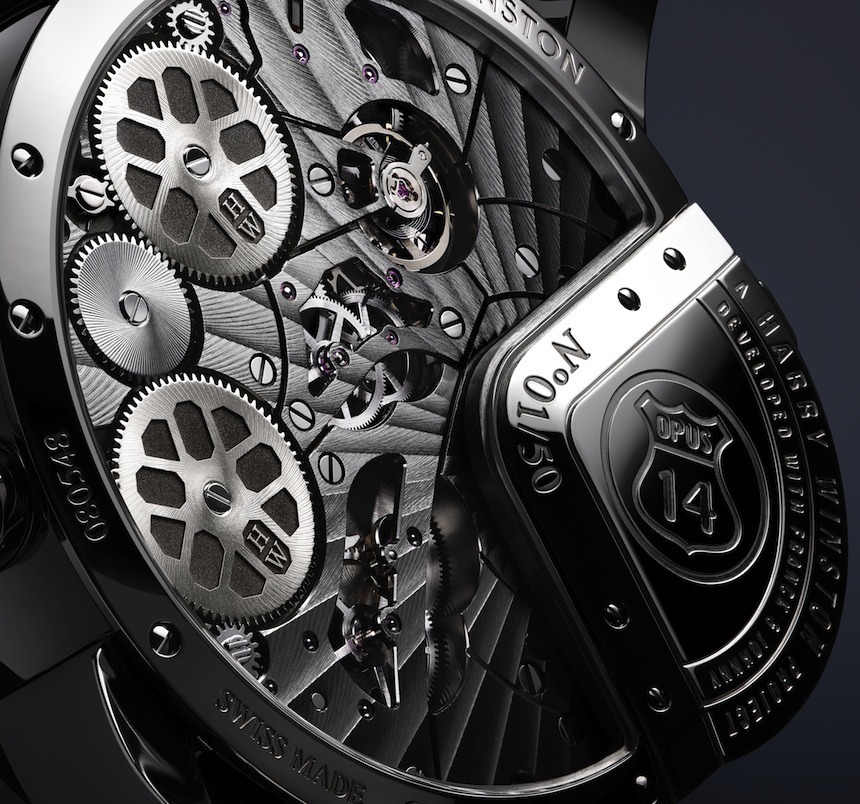
The 1,066-part movement is hand-wound, comes with a silicon balance spring, 31 bridges (that is an unusual specification that would be cool to see for other movements as well), and has two mainspring barrels – one for the timekeeping and the other for the automaton functions. Both the GMT and the date indications can be set through corrector pushers at the 12 o’clock position of the case, while the time is adjusted via the crown at 2.
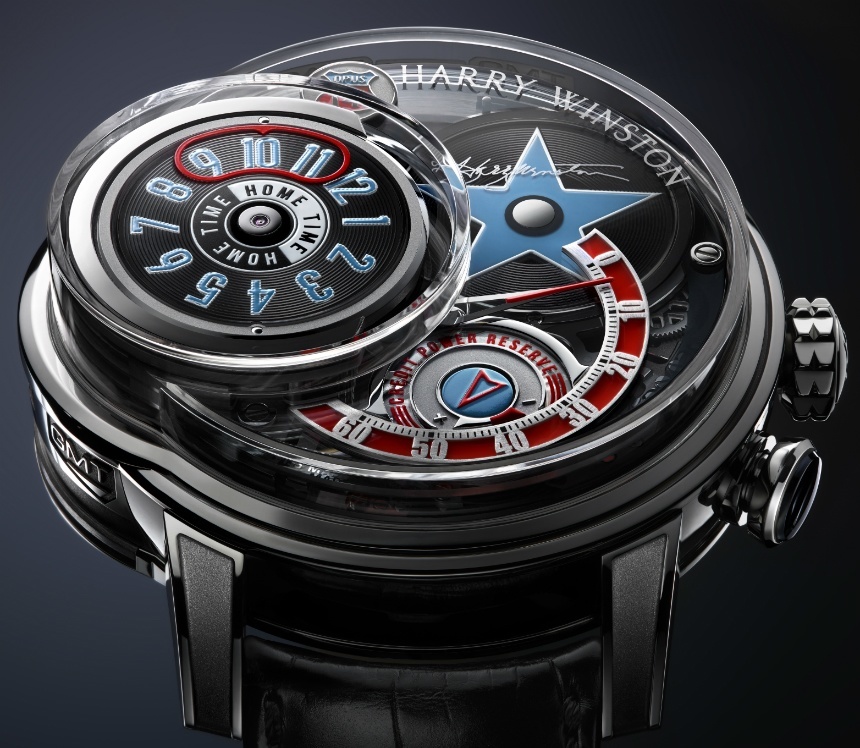
Beyond the sheer complexity of the piece, what is rather impressive is the fluid and smooth motion of the animation: it really does capture some of the charm and mechanical workings of those ancient record changer machines. The theme is an interesting and unexpected choice – even more surprising than the whopping dimensions of the white gold case – and yet, we are more than happy to see the Opus line continues along the “expect the unexpected” route. For a line of incredible watches that many considered to have come to an end, it is fantastic to see the Opus line live on; we only hope to see even more in the coming years. Price for the Harry Winston Opus 14 is 428,000 Swiss Francs. opus.harrywinston.com

